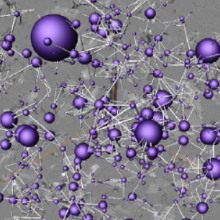New SFB 1313 publication, published in Frontiers in Earth Science. The paper has been prepared within SFB 1313's research project B05 and is a cooperation work between the Ruhr University Bochum and the University of Stuttgart:
Authors
- Martin Balcewicz (Ruhr University Bochum)
- Mirko Siegert (Ruhr University Bochum)
- Marcel Gurris (Ruhr University Bochum)
- Matthias Ruf (University of Stuttgart, Institute of Applied Mechanics, CE)
- David Krach (University of Stuttgart, Institute of Applied Mechanics, CE)
- Holger Steeb (University of Stuttgart, SFB 1313 research projects B05 and C05)
- Erik H. Saenger (Ruhr University Bochum)
Abstract
Over the last 3 decades, Digital Rock Physics (DRP) has become a complementary part of the characterization of reservoir rocks due to the non-destructive testing character of this technique. The use of high-resolution X-ray Computed Tomography (XRCT) has become widely accepted to create a digital twin of the material under investigation. Compared to other imaging techniques, XRCT technology allows a location-dependent resolution of the individual material particles in volume. However, there are still challenges in assigning physical properties to a particular voxel within the digital twin, due to standard histogram analysis or sub-resolution features in the rock. For this reason, high-resolution image based data from XRCT, transmitted-light microscope, Scanning Electron Microscope (SEM) as well as geological input properties like geological diagenesis, mineralogical composition, sample’s microfabrics, and estimated sample’s porosity are combined to obtain an optimal spatial segmented image of the studied Ruhr sandstone. Based on a homogeneity test, which corresponds to the evaluation of the gray-scale image histogram, the preferred scan sample sizes in terms of permeability, thermal, and effective elastic rock properties are determined. In addition, these numerically derived property predictions are compared with laboratory measurements to obtain possible upper limits for sample size, segmentation accuracy, and a geometrically calibrated digital twin of the Ruhr sandstone. The comparison corresponding gray-scale image histograms as a function of sample sizes with the corresponding advanced numerical simulations provides a unique workflow for reservoir characterization of the Ruhr sandstone.

Holger Steeb
Prof. Dr.-Ing.Spokesperson, Project Leader, Research Projects B05, C05, and Z02, Project WIKO, Central Project Z


